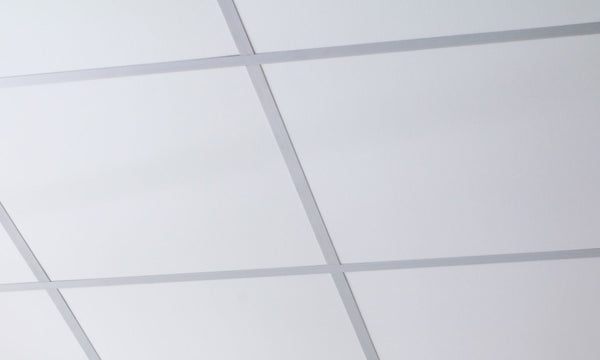Award Winning Service
Award Winning Service


Suspended ceilings, also known as drop ceilings or grid ceilings, offer numerous benefits such as improved aesthetics, enhanced acoustics, and ease of access to mechanical systems. When installing a suspended ceiling, it's crucial to prioritize safety and security throughout the process. This guide provides a comprehensive overview of the planning, tools, hardware, and techniques necessary for a successful and secure suspended ceiling installation.
Before diving into the actual installation, it's important to carefully plan your suspended ceiling project. Taking the time to assess room dimensions, select appropriate materials, and understand local building codes and regulations will ensure a smoother process and a successful result.
Before beginning your suspended ceiling project, measure the room's dimensions to determine the materials needed. Pay special attention to the ceiling height, as this will influence the suspension system's required length and the size of the ceiling tiles.
Choose between metal and wood framing options based on your project requirements and personal preferences. Additionally, select the right ceiling tiles for your project, considering factors such as fire resistance, acoustic properties, and aesthetics.
Ensure your suspended ceiling installation complies with local building codes and regulations. Failure to do so may result in fines or the need to redo the installation.
Having the right tools and hardware at hand is crucial for a successful suspended ceiling installation. By investing in high-quality tools and materials, you'll not only ensure a safe and secure installation but also save time and effort during the process.
Accurate measurements are crucial for a successful suspended ceiling installation. Use laser levels, tape measures, and a Jet Line for chalk lines to ensure precision.
To cut ceiling tiles and framing materials, use utility knives, metal snips (such as tin snips and aviation snips) to ensure clean and accurate cuts.
Utilize various fastening devices and installation tools for a secure suspended ceiling installation:
Proper installation of the suspended ceiling framework is essential for the overall stability and security of the system. By following a step-by-step approach and using the right tools and hardware, you'll create a sturdy foundation for your ceiling tiles and accessories.
Level and secure wall angles to perimeter walls to create a sturdy foundation for your suspended ceiling.
Cut and position main and cross tees to create a grid pattern, using Acoustical Grid Clamps for stability during installation.
Calculate the required wire lengths and attach them to structural supports using appropriate fasteners, such as the 750 SDC Self-Drilling Eye Lag Screw. Utilize Eye Lag Poles, such as the Lagmaster Pole Tool, for safe and efficient installation from the ground.

Once the framework is securely in place, it's time to add ceiling tiles and integrate any necessary accessories, such as light fixtures. Regular inspection and maintenance will ensure the longevity and safety of your suspended ceiling system.
Measure and cut ceiling tiles for a precise fit, using utility knives and metal snips as needed. Ensure that each tile is properly seated within the grid framework, maintaining a consistent appearance throughout the installation.
Properly integrate lighting and other accessories into your suspended ceiling, ensuring a seamless appearance and functionality. Follow manufacturer guidelines for installation and wiring, and make sure all components are securely fastened to the framework.

Perform regular checks on your suspended ceiling to ensure safety and proper upkeep, addressing any potential issues as they arise. This includes inspecting the framework, fasteners, and ceiling tiles for signs of wear, damage, or loosening.
The importance of safe and secure suspended ceiling installation cannot be overstated. By following this comprehensive guide, which includes proper planning, execution, and maintenance, you can achieve a successful project while prioritizing safety. Remember to utilize the essential tools and hardware, such as Eye Lag Screws, Eye Lag Poles, and Acoustical Grid Clamps, for a secure and efficient installation. Proper planning, attention to detail, and the use of high-quality tools and materials will ensure the longevity and safety of your suspended ceiling system.
{"one"=>"Select 2 or 3 items to compare", "other"=>"{{ count }} of 3 items selected"}
Comments
Leave a comment